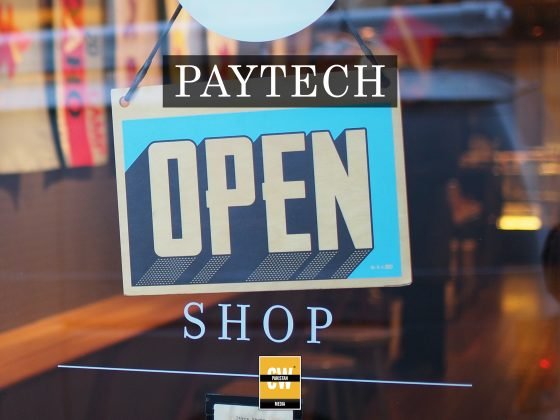Pakistan’s healthcare system has long been a story of overcrowded hospitals, overworked doctors, and uneven access between cities and villages. The country, with its population of over 230 million, has for decades struggled to provide even basic medical services at scale. Doctors are in short supply, rural facilities are chronically under-resourced, and the infrastructure creaks under the strain of demand. But beneath this crisis lies the outline of something new: a digital health renaissance, marked by technologies and platforms that are gradually redrawing the boundaries of healthcare delivery. These markers — telemedicine, artificial intelligence, mobile health applications, e-pharmacies, digital hospital systems, and blockchain-enabled pharma — are early but unmistakable signals that Pakistan is shifting from an analog model of care to one that is digital-first.
The scale of this transformation is still modest in monetary terms. As of 2024, Pakistan’s digital health sector was valued at roughly $80 million, with projections suggesting it will cross $100 million by 2025. In South Asia, India’s Ayushman Bharat Digital Mission has already set an ambitious benchmark, integrating digital health IDs and interoperability standards at national scale, while Bangladesh has rolled out community-based mHealth programs. Against this backdrop, Pakistan’s growth numbers may appear small, but the direction of travel matters more than the baseline. The arc points toward digitization, decentralization, and democratization of healthcare — and each of the renaissance markers signals that this shift is accelerating.
Telemedicine is perhaps the most visible marker. For millions of Pakistanis in remote and underserved areas, a smartphone now serves as a clinic. Platforms like Sehat Kahani and Marham have built bridges where roads and hospitals are absent. In 2024, Sehat Kahani facilitated more than 300,000 consultations, employing female doctors who might otherwise be excluded from practice due to cultural constraints, and reaching women and children who face barriers to physical care. Marham, with over 5 million users, has grown into one of the country’s most widely adopted telehealth platforms. Together, they illustrate how bandwidth, rather than bricks, is becoming the foundation of access. Projections suggest telemedicine could account for a quarter of all healthcare consultations in Pakistan by 2025, provided that 4G and 5G rollout continues and digital literacy campaigns take root. In this sense, telemedicine is the access marker of Pakistan’s health renaissance — reducing travel burdens, cutting costs, and making healthcare visible where it was previously absent.
Artificial intelligence represents another marker, this one of precision. Olive Health, a leading AI-powered platform, processed 150,000 diagnostic cases in 2024 with a 95% accuracy rate, flagging diabetes, hypertension, and cardiovascular issues with remarkable reliability. In overburdened hospitals, AI is now supporting triage decisions, optimizing patient flow, and reducing administrative noise, freeing clinicians to focus on treatment rather than paperwork. Globally, AI in healthcare is projected to grow into a $200 billion market by 2030, and while Pakistan’s $50 million AI health market projection for 2025 is a sliver of that, it is nonetheless transformative in local terms. Yet this marker comes shadowed by risk: Pakistan lacks a robust regulatory framework for AI in diagnostics, and its personal data protection bill remains embryonic. Without rules, accountability, or cybersecurity enforcement, the same algorithms that promise precision could become vectors for mistrust. Still, AI in diagnostics remains a proof point of the health renaissance: technology compensating for the systemic human and infrastructural deficits that the traditional system cannot overcome.
Mobile health apps offer another lens, marking the shift from passive patients to active consumers. Dawaai, the e-pharmacy platform, processed more than 750,000 orders in 2024, expanding into online prescriptions, lab tests, and health monitoring tools. Sehat Kahani extended its reach into maternal and mental health, embedding telepsychology and support services into its app at a time when demand for mental health care is rising sharply in the post-pandemic years. Yet the story of mHealth is also one of fragility. Downloads are easy, engagement is hard. Many users abandon apps after a few interactions, citing poor user experience, lack of personalization, or distrust in data handling. The marker here is empowerment: apps giving citizens the ability to order drugs, monitor conditions, and consult doctors — but empowerment will only endure if privacy protections, language accessibility, and trust-building measures keep pace.
The e-pharmacy market itself is both a growth marker and a regulatory fault line. By 2025, it is projected to reach $100 million in revenue, driven by rising demand for home-based services and online medicine access. Yet the absence of a strong national regulatory framework leaves the sector vulnerable to counterfeit drugs and inconsistent quality controls. Companies like Dawaai and Healthwire have expanded aggressively, offering not just medicine but bundled services like adherence reminders and virtual consultations, but growth outpacing regulation risks undermining consumer confidence. In South Asia, India has begun imposing stricter controls on e-pharmacies, and Pakistan will face similar pressures. If trust is secured, e-pharmacies could become one of the most important markers of the renaissance: supply chains rewired for authenticity, convenience, and transparency.
Inside hospitals, too, the renaissance is leaving markers. Electronic Health Records are replacing paper files in Karachi, Lahore, and Islamabad. Aga Khan University Hospital and Shaukat Khanum Memorial Cancer Hospital have integrated digital records and hospital management systems, allowing doctors instant access to histories, lab results, and treatment notes. Indus Hospital and Lahore General Hospital experimented with telemedicine during the pandemic, and have since embedded it into care models. These institutional markers reflect a shift in how hospitals think of themselves: no longer as physical repositories of care alone, but as digital networks connected to patients even beyond their walls.
The pharmaceutical industry provides yet another frontier marker. Blockchain-enabled tracking is being piloted to tackle counterfeit drug circulation, a longstanding problem in Pakistan’s market. IoT systems are optimizing inventory, reducing waste from overstocking and stockouts, and AI is being applied to research pipelines to predict drug candidates more efficiently. Companies like Getz Pharma and Searle Pharmaceuticals are experimenting with these tools, positioning themselves closer to global pharma trends where digital R&D, supply chain transparency, and personalized medicine are becoming standard practice. For an industry plagued by inefficiency and counterfeit risks, this turn toward digital is both overdue and decisive.
The state, meanwhile, has begun to play the role of arbiter. The 2020 Telemedicine Guidelines established a regulatory baseline, while the 2024 National Digital Health Strategy outlined interoperability and EHR integration across public and private sectors. Provincial health card schemes, long criticized for inefficiencies, could be reimagined as biometric-linked health apps connected through NADRA, PBS, and PTA systems. Such a transition would not only eliminate fraud but embed preventive care — reminders for vaccines, screenings, and chronic disease management — into a single digital platform. If implemented effectively, this would be a renaissance marker of inclusion: the welfare state shifting from physical cards to digital platforms, offering visibility, portability, and accountability.
Yet every marker is tempered by constraint. Connectivity in rural Pakistan remains weak; digital literacy gaps persist among both patients and providers; privacy protections are not yet enforceable; and regulatory frameworks for AI, e-pharmacy, and data interoperability remain incomplete. The risks are real: unreliable platforms undermining trust, data breaches eroding confidence, and inequities widening if the digital divide is not bridged. But the opportunity cost of inaction is even greater. Traditional healthcare systems are already at breaking point, and without digital reinforcement, Pakistan’s demographic and epidemiological pressures could overwhelm capacity.
The health renaissance is thus both fragile and inevitable. Its markers — a rural woman consulting a doctor via Sehat Kahani, an AI algorithm at Olive Health catching a disease early, a Dawaai order arriving in a remote district, an EHR file pulled up in seconds at Shaukat Khanum, a blockchain-verified drug from Getz Pharma — are fragments of a system still under construction. Pakistan stands at a threshold where healthcare can no longer be imagined solely in physical terms. The story is no longer one of scarcity alone but of possibility, tempered by the urgency of regulation, infrastructure, and trust. The renaissance is underway, and its markers are multiplying. The question is whether Pakistan can strengthen them fast enough to make the transformation permanent.
Follow the SPIN IDG WhatsApp Channel for updates across the Smart Pakistan Insights Network covering all of Pakistan’s technology ecosystem.
State of Digital Health in Pakistan: Health Renaissance Markers





